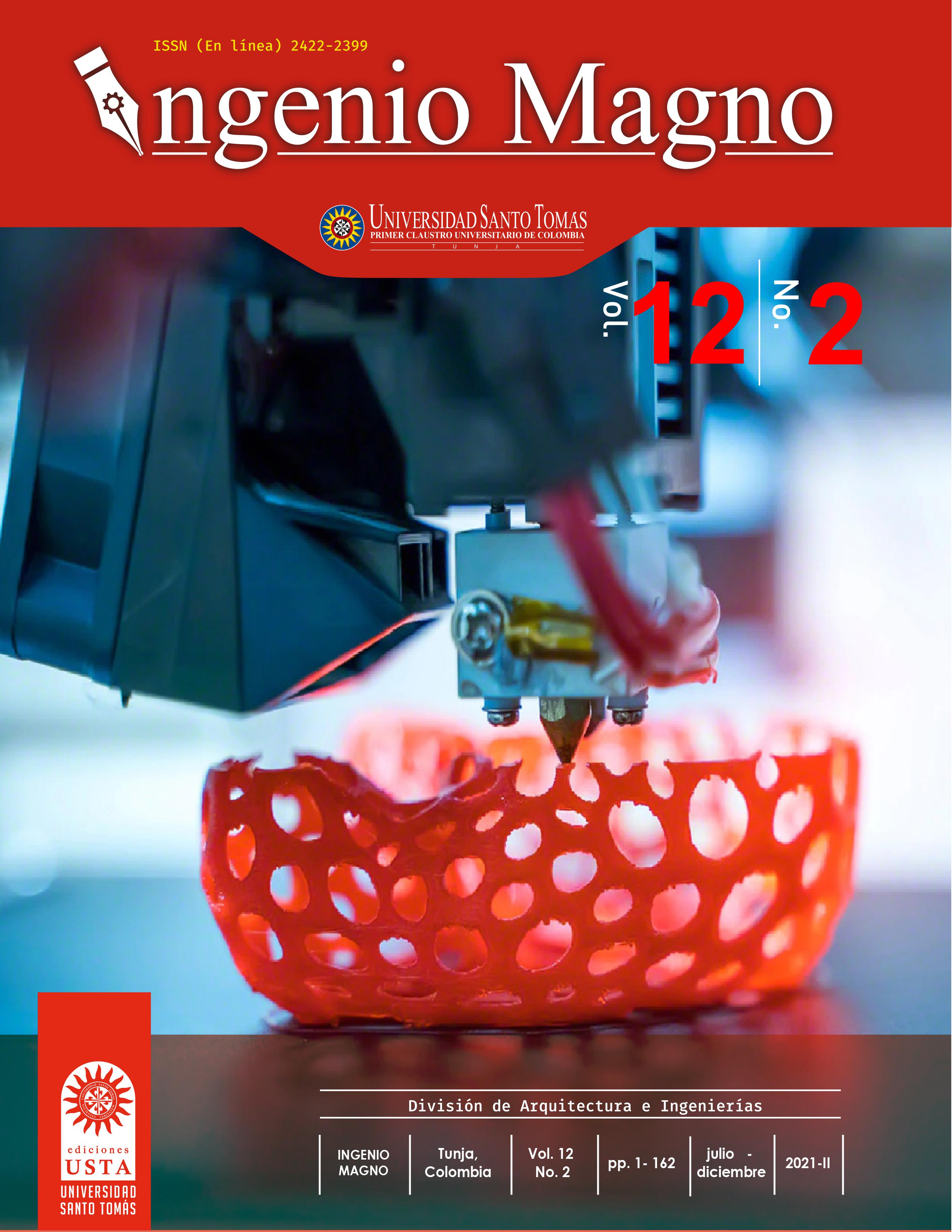Characteristics of Essential Oil of Lemongrass (Cymbopogon Citratus) Produced in Yopal, Colombia
Main Article Content
Abstract
Downloads
Article Details
DECLARATION OF ORGINIALITY OF SUBMITTED ARTICLE
With this document, I/We certify that the article submitted for possible publication in the institutional journal INGENIO MAGNO of the Research Center Alberto Magno CIIAM of the University Santo Tomás, Tunja campus, is entirely of my(our) own writing, and is a product of my(our) direct intellectual contribution to knowledge.
All data and references to completed publications are duly identified with their respective bibliographical entries and in the citations thus highlighted. If any adjustment or correction is needed, I(we) will contact the journal authorities in advance.
Due to that stated above, I(we) declare that the entirety of the submitted material is in accordance with applicable laws regarding intellectual and industrial property, and therefore, I(we) hold myself(ourselves) responsible for any complaint related to it.
If the submitted article is published, I(we) declare that I(we) fully relinquish publishing rights of the article to the University Santo Tomás, Tunja campus. As remuneration for this relinquishment of rights, I(we) declare my(our) agreement to receive two (2) copies of the edition of the journal in which my(our) article appears.
References
Berenice B. Lorenzetti, Gloria E.P. Souza, Silvio J. Sarti, David Santos Filho, y Sérgio H. Ferreira. (1991).
Myrcene mimics the perpheral analgesic activiy of lemongrass tea. Journal of Ethnopharmacology , 43-48.
Celso, A., & Costa, L. (2011). Cholesterol reduction and lack of genotoxic or toxic effects in mice after repeated 21-day oral intake of lemongrass (Cymbopogon citratus) essential oil. Food and Chemical Toxicology.
Duarte, S., Cárdenas, C., Martínez, J., & Stashenko, E. (2007). Estudio de la variación circadiana de los metabolitos secundarios volátiles obtenidos por destilación - extracción con solvente simultánea, de hojas de Lippia alta (Fam. Verbenaceae). Scientia et Rechnica, 83-85.
Figuerinha, A., Cruz, M., Lopes, M., & Batista, M. (2010). Anti-inflamatory activity of Cymbopogon citratus leaf infusion in lipopolysaccharide-Stimulated dendritic cells. Journal of Medicinal Food, 681-690.
Haanaa, A. M., Sallam, Y., El-Leithy, A., & Aly, S. (2012). Lemongrass (Cymbopogon citratus) essential oil as affected by drying methods. Annals of Agricultural Science, 113-116.
Instituto de Investigación de Recursos Biológicos "Alexander von Humboldt". (2003). Biocomercio Sostenible. Estudio de mercado colombiano de aceites esenciales. 109.
Instituto Nacional de Seguridad e Higiene en el Trabajo. (2013). Documentación toxicológica para el establecimiento del límite de exposición profesional de Citral. Obtenido de http://intranet.insht.es/InshtWeb/Contenidos/Documentacion/LEP%20_VALORES%20LIMITE/Doc_Toxicologica/Capitulos%2072_82/Ficheros/DLEP%2073.%20citral.pdf
Lawrence, R., Lawrence, K., Srivastava, R., & Gupta, :. D. (2015). Antioxidant activity of lemongrass essential oil (Cymbopogon citratus) grown in North Indian plains. The Scientific Temper , 23-29.
Negrelle, R.R.B., Gomes, E.C. (2007). Cymbopogon citratus (DC.) Stapf : chemical composition and biological activities. Revista Brasileira de Plantas Medicinais, v.9, n.1, p.80-92.
Ohno, T., Kita, M., Yamaoka, Y., Imamura, S., Yamamoto, T., Miltsufuji, S., Imanishi, J. (2003). Antimicrobial activity of essential oils against Helicobacter pylori. Blackwell synergy, 207-215.
Prins, C. L., Paiva-Freitas, S., Menezes-Asis, M., Curcino-Vieira, I., & Amaral-Gravina, G. (2013). Citral accumulation in Cymbopogon citratus plant as influenced by N6-benzylaminopurine and light intensity. Theoretical and Experimental Plant Physiology, 159-165.
Rodríguez R., Ruiz Nova C., Arias Moyano G., Castro H. Martinez J., Stashenko E. (2012). Estudio comparativo de la composición de los aceites esenciales de cuatro especies del género Cymbopogon (Poaceae) cultivadas en Colombia. Boletín Latinoamericano y del Caribe de Plantas Medicinales y Aromáticas 1, 77-85.
Soto Rafela, Vega Gilberto, Tamajón Aldo. (Mayo de 2002). Estación experimental de Plantas Medicinales. Revista Cubana de Plantas Medicinales, v.2002 n.2. Obtenido de http://scielo.sld.cu/scielo.php?script=sci_arttext&pid=S1028-47962002000200007
Stashenko, E. (2009). Aceites esenciales. Bucaramanga: Universidad Industrial de Santander.

